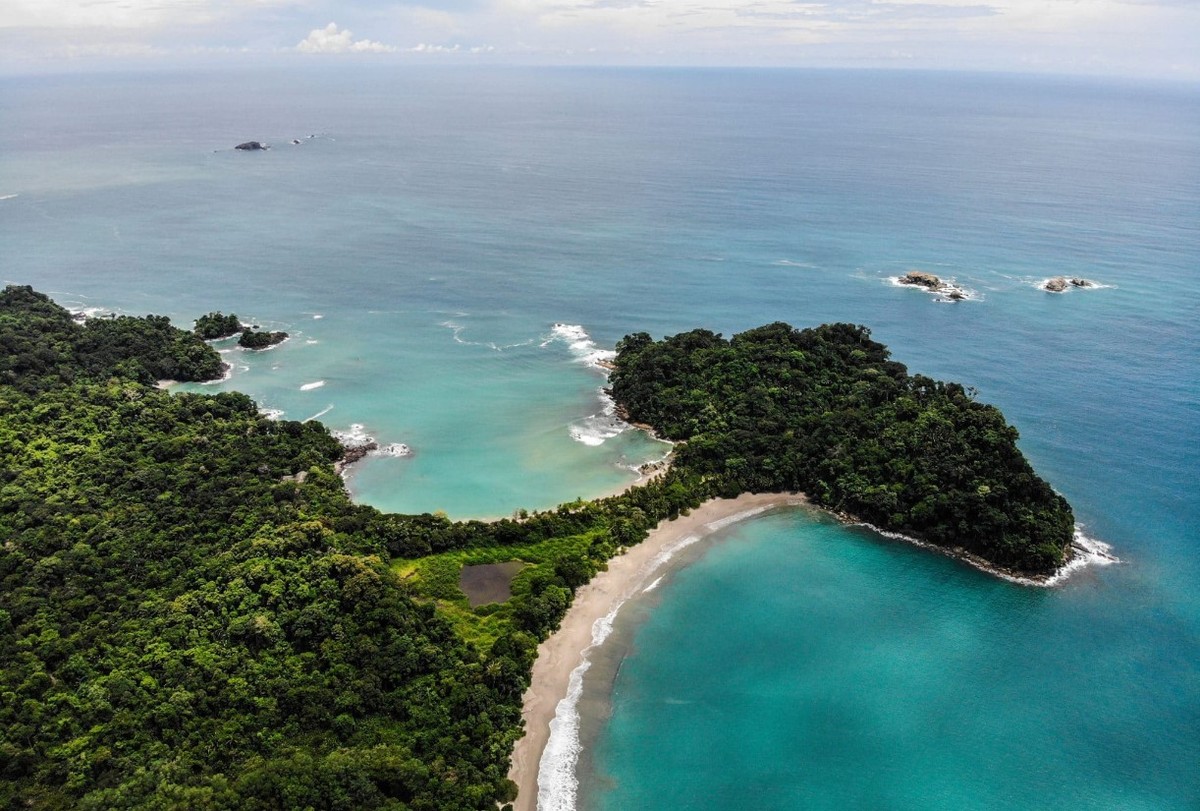
Welcome to Aurora Expeditions’ Costa Rica and the Panama Canal voyage.
Immerse yourself in the remarkable coastlines of Costa Rica and Panama. Costa Rica is one of the most biodiverse regions on earth. Discover tropical rainforests teeming with outstanding variety of wildlife, dazzling birdlife and flamboyant flora. In Panama, discover pristine coral reefs and learn the remarkable history of the Panama Canal on a guaranteed daylight crossing from the Pacific Ocean to the Caribbean Sea.
- Enjoy hikes among some of the most biodiverse rainforests on earth, a chance to encounter wildlife including sloths, howler, spider, capuchin and squirrel monkeys
- Enjoy a guaranteed daylight crossing of the Panama Canal
- Coiba National Park in Panama offers superb marine and terrestrial wildlife viewing opportunities, and is UNESCO World Heritage site
- Keep your eyes and ears tuned for the regal Scarlet Macaws at Curú National Wildlife Refuge
Prices quoted here are often dependent on currency fluctuations. Please check with (01432 507450 or info@small-cruise-ships.com) for the very latest price, which may well be cheaper than the one advertised here.
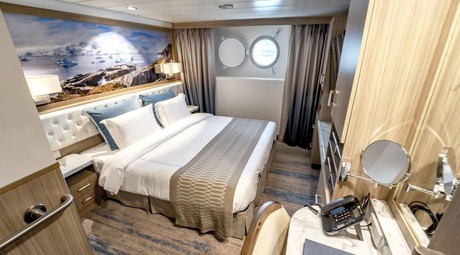
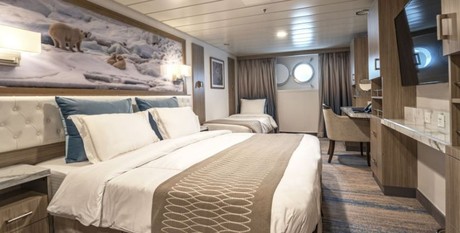
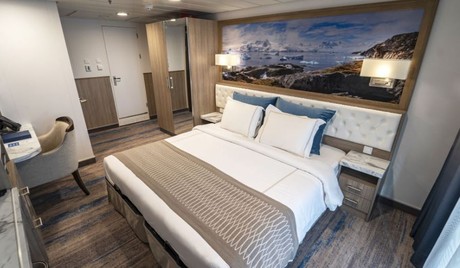
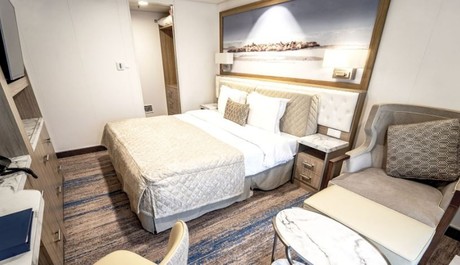
Prices quoted here are often dependent on currency fluctuations. Please check with (01432 507450 or info@small-cruise-ships.com) for the very latest price, which may well be cheaper than the one advertised here.
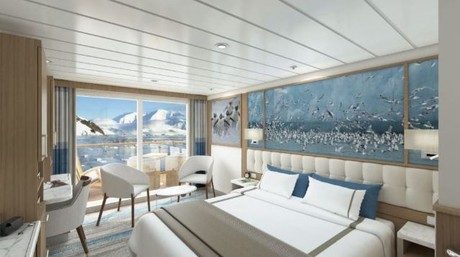
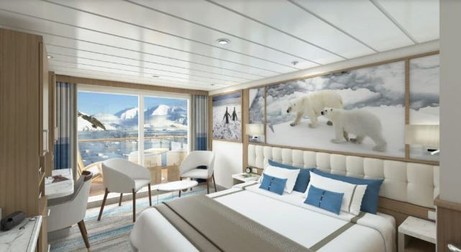
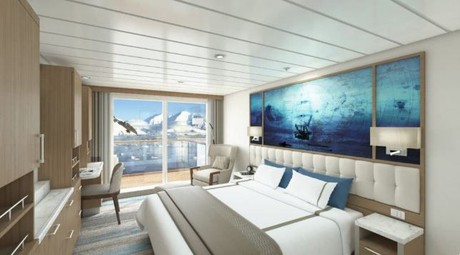
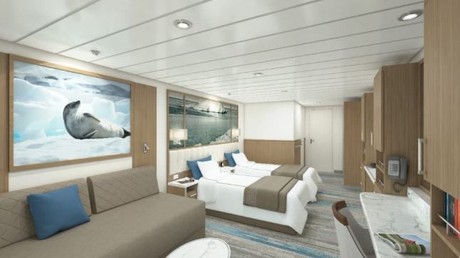
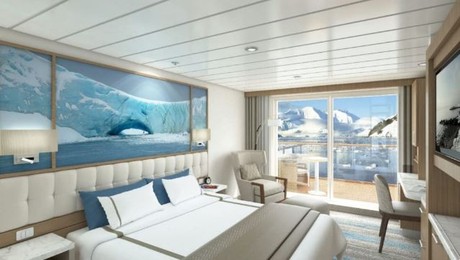

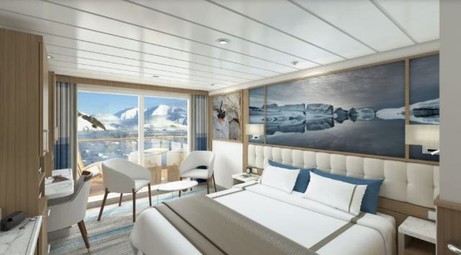
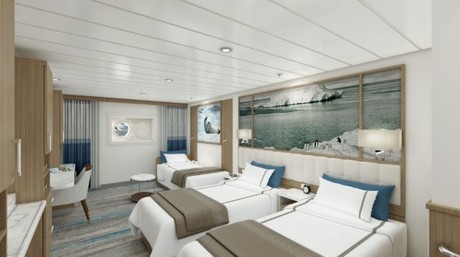
Having made your way to San Jose, you will be met by a representative of Aurora Expeditions and transferred to our group hotel. Please visit the Aurora Expeditions hospitality desk to collect your luggage cabin tags and to speak with our ground operations team, who may have information to share with you about pre-embarkation or to provide you with information about where to dine, withdraw cash or purchase last minute items from a local pharmacy or supermarket.
Enjoy free time, and in the evening, dine at your leisure (dinner not included).
Accommodation: DoubleTree by Hilton Hotel Cariari (or similar)
This morning, your luggage will be collected from the hotel and transferred directly to the port for sanitisation, clearance and delivered to your cabin ahead of your arrival on board. There is time to settle into your cabin before attending important safety briefings. Enjoy the thrill of departure as we ‘throw the lines’ and set sail for an exciting tropical adventure.
Curú National Wildlife Refuge is a privately-owned nature reserve offering visitors outstanding eco-tourism experiences. The refuge is the first privately-owned refuge in Costa Rica, encompassing more than 3,700 acres of tropical forests, mangroves, and well-marked paths. 17 hiking trails wind through the varied terrain within the reserve, where you may see white-tail deer, armadillos and iguanas. Various monkey species are prolific within refuge including native capuchin, spider, and howler monkeys. Located on the southern Nicoya Peninsula of north-western Costa Rica, the refuge is brimming with wildlife and hosts one of the most beautiful beaches and protected bays on the Nicoya Peninsula, a great place to enjoy water activities.
Boasting over 100 species of mammals, 184 species of birds and an impressive variety flora, Manuel Antonio National Park understandably attracts wildlife enthusiasts from all over the world. Costa Rica’s star attractions - two and three toed sloths, as well as white-faced monkeys, toucans, agoutis, armadillos and coatis are a few of the exciting animals that you may encounter within the park. We explore the park in the cool, early hours of the morning before returning to the vessel for lunch. In the afternoon, you have the option to explore Quepos town or enjoy some water activities.
The untamed Osa Peninsula is considered by National Geographic to be ‘one of the most biologically intense places on earth’. We plan to hike the trails at Rio Claro Wildlife Refuge, a sanctuary that encompasses 500 hectares of tropical rainforests, making it one of the most important natural preserves in Central America. Rio Claro is one of the last refuges for pumas, ocelot, jaguarundis, tapirs, white-lipped peccaries and a host of other rainforest animals. The high plateau forests, with trees towering over 43 m (140 ft), supports hundreds of species of ferns, bromeliads and orchids, and creates a biological corridor between palm swamps and mangroves. It is an extension of Corcovado National Park, the country's largest and one of the most remote parks in Costa Rica.
Golfo Dulce, or Sweet Gulf, is a large bay that hugs pristine beaches, rivers and tall evergreen forests - a protected area known as the Golfo Dulce Forest Reserve. As one of the wettest places on Earth with over 5,000 millimetres (200 inches) of rainfall per year, the Golfo Dulce Forest Reserve features some of the world’s tallest trees.
The warm tropical waters in the gulf are a great place to enjoy aquatic activities, where spinner dolphins are often seen frolicking in the bay. There are ancient coral reefs to explore, where you can see enormous coral gardens and the creatures that inhabit them. On land, there are more pristine rainforest trails for you to explore, where you can marvel at the extraordinary flora and fauna that contributes to Costa Rica’s biodiversity.
By Zodiac, we shuttle ashore to Saladero Ecolodge and explore the gardens and walking trails filled with flowering plants. Keep a watch for birds including toucans, scarlet macaw, caracara and woodpeckers.
In Golfo Dulce we exit Costa Rica and continue our journey as we sail to Panama.
We continue to Coiba Island, a National Park and a UNESCO World Heritage site, located off the southwest coast of Panama. The national park includes the main island of Coiba and 38 smaller islands in the surrounding marine areas within the Gulf of Chiriquí. Protected from the cold winds and the effects of El Niño, the Pacific tropical forest if Coiba Island features exceptionally high levels of endemic mammals, birds and plants. It is the last refuge for a number of threatened animals including the crested eagle.
On Coiba Island, we spend the morning in the area of Granito de Oro islet, a unique place that allows snorkellers to encounter a diversity and volume of marine life that is usually reserved for scuba divers. This is one of the world’s most sought-after diving destinations. The local ranger will provide guidance on the optimal places where we can enjoy water activities.
The following morning, we plan to land at Punta Clara, which served as a penal colony from 1919 to 1996, where Panama’s most notorious criminals and political prisoners were incarcerated. At the peak of its operations, the prison housed up to approximately 3,000 inmates in about 30 camps spread around the islands. You can visit the dilapidated penitentiary buildings or walk along the beach looking for scarlet macaws, yellow caracara and various seabirds. Back on board, enjoy lunch as we set towards the Pearl Islands.
After a morning at sea, we reach The Pearl Islands of Panama, an archipelago located in the North Pacific Ocean in the Gulf of Panama, covering around 250 small islands. The Spanish Conquistadors discovered the islands in 1503 and gave the Islands its name due to the great amounts of pearls found on them. The Pearl Islands were originally named by the Spanish explorer Vasco Nuñez de Balboa due to the bountiful pearls that were harvested off the islands’ shores. The Pearl Islands are most famous for their spectacular and tranquil white sand beaches, untouched forests, and colourful coral reefs offshore – ideal for diving, snorkelling and paddling.
We plan to visit Bartolome Island to enjoy some paddle boarding, paddling in kayaks and snorkelling in the warm, turquoise waters. We might also visit nearby Pacheca and Pachequilla islands to enjoy some birdwatching.
Three million years ago, the Isthmus of Panama emerged from the sea and changed the world forever. It divided an ocean and joined two continents together, triggering one of the most important natural evolution events in the history of the world. Today, this narrow land bridge in Central America is home to more species of birds and trees than the whole of North America. Panama is of course world-famous for its 77 km (48 mi) canal that connects the Pacific Ocean with the Atlantic Ocean.
Panama’s history has been formed by a rich pre-Columbian era for more than 12,000 years. Early cultures in Panama were the Monagrillo, the Cueva and the Conte, particularly famous for their pottery, which was the first in the Americas. The first European claiming the territory of today’s Panama was Rodrigo de Bastidas, coming from Colombia’s Atlantic coast in 1501. In 1513 Vasco Nuñez de Balboa became the first Spaniard to see the Pacific Ocean from the top of a hill. Four days later he and his men stood at the shores of the Pacific Ocean. In 1519, Panama City was founded and became an important hub for seized goods making its way from Peru to Spain.
We visit Gatun Lake, a large artificial lake with a unique ecosystem that forms a major part of the Panama Canal, carrying ships for 33 km (20 miles) on their transit across the Isthmus of Panama. At the time it was created, Gatun Lake was the largest artificial lake in the world. The vegetation at Gatun Lake offers ideal habitats for a large number of bird species.
The excursion starts with boat trip that heads north on the canal for 25 minutes where we may get close to some of the larger ships that transit the canal daily. Enjoy a leisurely cruise along the forested banks of Gatun Lake looking for wildlife such as capuchin monkeys, howler monkeys, three-toed sloth, various kinds of toucans and other bird life. This is a place to observe the raw regenerative power of the forest as it struggles to claim what was once wild.
In the afternoon, we visit an Emberá village, an indigenous tribe who have inhabited this region for centuries. There are about 33,000 Emberá living in the Darién, Panama, and 50,000 in Colombia. On our visit to one of the Emberá villages near Panama City, you will be warmly welcomed by the local villagers and enjoy a presentation to learn about their history, culture and way of life. On a guided walk through their village, you will meet more villagers who may show you inside their home, sample local snacks and learn about their medicinal plants. The Emberá are renowned for their exquisite handmade jewellery and woven handicrafts, and you will have the chance to appreciate and to purchase their work.
Later in the day, we may have the chance to stop at the Miraflores Visitor Centre overlooking the Miraflores lock of the Panama Canal. Four exhibition halls portray the canal's history and biodiversity, while three terraces and observation decks are ideal places for observing the canal's operation and the passage of ships through the locks.
Crossing the Panama Canal will surely be a highlight for many travellers. Each year, over a million people visit the canal to witness this engineering marvel at work. Starting in the Pacific Ocean, you will be able to admire the Bay of Panama and Panama City’s splendid skyline before passing under the ‘Bridge of the Americas’. The vessel will then transit through the first set of locks, the Miraflores Locks, where it will be lifted 16 metres (52 foot) in two distinct steps. Next, your ship will enter Miraflores Lake, which is a small artificial body of fresh water that separates Pedro Miguel Locks from Miraflores Locks.
The vessel will transit through Pedro Miguel Locks, which is one of the two sets of locks on the Pacific side, and here the vessel is lifted 9 metres (29 foot) in one step. After exiting Pedro Miguel locks, your boat will travel through the Gaillard Cut, where the Chagres River flows into the canal. The Gaillard Cut (also known as Culebra Cut because its curves resemble a snake) is one of the main points of interest for visitors because it was carved through the Continental Divide and this section of the canal is full of history and geological value.
As you transit the cut you will see dredging occurring to control the sediments entering the canal because of the terrain’s susceptibility to landslides. Sail through Gatun Lake, which was formed by erecting the Gatun Dam across the Chagres River, and during your transit through the lake, you will pass the Smithsonian Research Station at Barro Colorado. The last of the three locks is the Gatun Locks, the only set of locks in the Atlantic sector of the canal. At Gatun Locks, the vessel will be lowered a total of 26 (85 foot) metres in three distinct chambers.
The complete crossing from the Pacific to the Atlantic Ocean takes approximately 10 hours, a journey that once took almost two weeks to complete, when vessels were forced to sail around the notoriously rough seas around Cape Horn at the bottom of South America to reach the Pacific coast.
This evening, celebrate a memorable journey at Captain’s Farewell reception.
Disembark in Colon, on the Caribbean side of the Panama Canal, where you'll farewell your expedition team before transferring to the airport in Panama City for your onward journey.
Note: At the conclusion of the voyage, we do not recommend booking flights departing Panama City prior to 2.00 pm.
In true expedition style we encourage exploration and adventure, offering flexibility in challenging environments in a way that puts you among the action to see and do as much as possible. This itinerary is only a guide and subject to change due to ice and weather conditions.
Greg Mortimer

| Length | 104 metres |
|---|---|
| Launched | 2019 |
| Passengers | 132 |
Capable of negotiating the strongest winds and waves, the Greg Mortimer is built to world-class polar standards – designed in close consultation with our expedition specialists, taking advantage of our more than 25 years of experience.
The Greg Mortimer redefines expedition cruising for the future, with just 132 passengers on board in the polar regions. Not only is the ship bigger to contend with adverse weather conditions, its added creature comforts make for a more enjoyable journey out on the open ocean. The Greg Mortimer remains true to our ethos and focus on multiple landings, flexible itineraries and family atmosphere – just with an improved home base!
As a modern and custom-designed ship, the Greg Mortimer is at the cutting edge of nautical technology. Robust, powerful and built with our guests in mind, this ship marks a significant investment in our fleet's capabilities. From the European Arctic to the depths of Antarctica, and other far-flung destinations in-between, the Greg Mortimer will make your journey a breeze!
Greg Mortimer X-BOWX-BOW™
Our expeditions face some of the worst Mother Nature can throw at us. However, this won't be problem on the Greg Mortimer with the introduction of the patented X-BOW™, created by Norwegian ship designer ULSTEIN. As one of the leaders in marine engineering, ULSTEIN's X-BOW™ is an inverted bow concept that's been built on over 100 vessels in the shipping industry. Excitingly, we are the first expedition cruise operator to utilise this technology for the challenging open ocean waves!
Hydraulic viewing platforms
Although there is no doubt that you'll love the aesthetics of the Greg Mortimer, we are all here to admire the spectacular landscape and spot the elusive wildlife in their natural habitat. To ensure you get the best views possible, the new ship features unique viewing platforms, custom-built for the Greg Mortimer. Accessed from Deck 5, the two platforms fold out hydraulically for unobstructed views of passing marine life and seabirds – make sure your camera is locked and loaded!
Zodiac launching platform
Zodiacs are a vital part of getting up close and personal on your adventure – sneaking into areas that the Greg Mortimer can't reach. On this new ship, there are specially designed launching platforms that enables us to load Zodiacs easily and quickly, allowing you to spend more time exploring on the two to three daily landings. There are 15 Zodiacs that are boarded from either side of Deck 3 (sea level), perfect for when there is a group of fluffy cute penguin chicks that we need a photo of!
Activity Platform
Regardless of your destination, we offer a number of additional activities to allow you to see more of the environment. From kayaking and diving to climbing and ski touring, it's these optional activities that often leave the biggest impression on your trip as a whole. Onboard the Greg Mortimer, there is a spacious prep and loading platform for these activities and more – designed in consultation with our expert activity guides.
Environmentally friendly
Climate change and carbon emissions continue to be major issues that everyone needs to be aware of and actively managing. This includes reduced emissions into the air and sea, lower energy consumption, high fuel efficiency, reduced light pollution for minimal wildlife disruption and lower on-board plastic use. It's vital to also mention the state-of-the-art virtual anchoring technology of the X-BOW™, which means the ship can float anchorless while launching Zodiacs, kayaks etc, without disturbing delicate sea floor areas.
Safety features
This starts with the return-to-port equipment – not compulsory on a ship of this size – which duplicates the propulsion system. This enables the ship to maintain operating systems and comfort in the event of engine failure. Furthermore, the Greg Mortimer is Polar Code 6 compliant, holds BV class and is fully compliant with the latest SOLAS requirements. It's also built with a Rolls Royce stabiliser system. If there's an incident or accident during your adventure, the ship has an on-board, fully-stocked medical centre – where our trained medical team can provide necessary treatment in a timely fashion. Safety continues to be an issue that our team takes very serious and the Greg Mortimer allows us to create an environment where you can concentrate on the brilliant landscape and wildlife, without worrying about your wellbeing.
Ship Life
Greg Mortimer is designed to serve your every need. It's your bedroom, bathroom, lounge, dining room and even your observatory. Make yourself at home, the Greg Mortimer is yours to enjoy!
Observation Points
Let's face it – you don't want windowless rooms when travelling around some of the most beautiful locations around the world. This is why the Greg Mortimer is designed with plenty of dedicated observation spaces – ideal for keen bird spotters, wildlife watchers and those wanting to watch the scenery go past. From the indoor 180-degree lounge and outdoor 360-degree open deck, both on deck 8, to the 270-degree open sundeck on level 7, there are plenty of observation points to share around the ship! If these are full, then you can take up a spot on one of the two hydraulic viewing platforms on deck 5. Aurora Expeditions also has an open bridge policy, which means at any point you can come up to the bridge and check out what the captain and officers are up to. From watching navigational practices to observing mapping techniques, you can get a firsthand look at the inner workings of the Greg Mortimer.
Shore excursions
Although the ship is fun, the real enjoyment comes from the many shore excursions that are available. Depending on the weather and itinerary, it's possible to take two to three landings daily, taking a look at everything from rock formations and ancient ruins to cute groups of penguins. We know time is of the essence in these wild locations, so the Greg Mortimer has been designed with 15 Zodiacs, which means you can maximise your time on shore. From four dedicated sea level launching platforms, transfers are quicker, safer and enable you to get closer to the action for a longer period of time. Just remember to charge your camera before you step onto the Zodiac!
Activity options
From kayaking and skiing to diving and climbing, these are one-in-a-lifetime opportunities that you need to take advantage of. Aboard the Greg Mortimer there is a specially designed launching platform for all activities, a concept overseen by our activity experts. This area also includes individual lockers in the expansive mudroom and rapid drying areas for wetsuits so you can quickly get warm after exploring in the elements!
Dining
From the moment you step onto the Greg Mortimer, we aim to give you the best hospitality service possible. Starting with the official Captain's welcome, as our guests, you're welcome to 24 hours complimentary coffee, tea and snack facilities in addition to the range of different menu options and courses for each meal. Meals are served in large dining room/restaurant with family style dining, perfect to swap stories with your new expedition family. Enjoy the range of house wine, beers and soft drinks included with dinner after a long day in the wild, preparing yourself for another exciting day to follow. On the last day of your trip, the team on the Greg Mortimer put on a special farewell four-course dinner and cocktails – a perfect way to reflect on your time on the ship and consolidate lifelong friendships with the people you've met on-board.
On-board entertainment
When you’re relaxing during a sea day or you have a little downtime on the ship between excursions, what is there to do onboard the Greg Mortimer? Plenty! On all our expeditions, there are experts who lead presentations in the spacious lecture room so you can understand the region a little better. These often include topics as broad as history and culture to biology and climate change, these presentations aim to educate and entertain. If you're keen to just watch the surroundings and keep your eyes peeled for wildlife, you have access to two bars/lounges where the stunning floor to ceiling windows offer a special perspective on the landscape. The Greg Mortimer is also decked out with other facilities for your enjoyment. There is a library on Deck 5 with books and maps and a Wellness Centre complete with gym equipment, sauna and spa. Feeling a little sore after walking around all day? Treat yourself to a massage at the Wellness Centre and feels the aches disappear! Keen photographers and artists will revel in the multimedia room on Deck 5.

Sylvia Earle
.jpg)
| Cabins | 62 |
|---|---|
| Launched | 2022 |
Sylvia Earle made her inaugural cruise in 2022; she honours the highly accomplished marine biologist, oceanographer and explorer, Sylvia Earle. As the first female chief scientist of the U.S. National Oceanic and Atmospheric Administration, and named by Time Magazine as its first Hero for the Planet in 1998 – this vessel pays tribute to Sylvia’s long standing conservation efforts for marine protected areas and ocean wildlife. Sylvia Earle will be actively involved in the development of her namesake.
The streamlined Ulstein X-BOW® cuts through the swell so you feel fewer vibrations and disturbances, and makes quicker transits through waves. It also helps reduce fuel consumption by up to 60%^. Experience the Glass Atrium Lounge inside the bow, featuring huge windows and superb views to the front of the ship.
In between landings, enjoy the heated saltwater open air swimming pool and jacuzzis on board the Sylvia Earle and watch the world go by, or experience our gym, sauna or enjoy a massage (additional cost) in the Wellness centre.
Sylvia Earle carries many Zodiacs, which you can board via four dedicated, sea-level launching platforms. These platforms make boarding the Zodiacs as quick, efficient and safe as possible, minimising wait times and getting you closer to the action for longer.
Dining
One of the most important parts of any expedition is the food! Whatever adventures the day holds, you will be fuelled-up with hearty meals and delicious morning/afternoon teas cooked by our onboard chefs. Meals are a great time to soak up the expedition camaraderie in our open seating dining area. Share stories with your fellow travellers and ask our expedition team questions that may have come up during the day. Tea, coffee and snacks are available 24 hours a day, and our chefs offer different menu options and courses for each meal. Enjoy the range of house wine, beers and soft drinks included with dinner after a long day in the wild. We also invite you to join your captain and expedition team for informal Captain’s Welcome and Farewell drinks, with complimentary beverages and cocktail appetisers, followed by a 3 course meal.
Responsible Travel
We believe that preserving and protecting the environment is of the utmost importance and this is reflected in several features of the Sylvia Earle. The Sylvia Earle will boast one of the lowest polluting marine engines in the world due to low energy consumption, high fuel-efficiency and a streamlined design to deliver an 80% reduction in emissions.* The ship can also utilise virtual anchoring to hold its position using a combination of GPS, steering technology, propellers and thrusters. This protects the sea floor and minimises the damage caused by conventional anchors.
*Compared to Tier 1 engines.
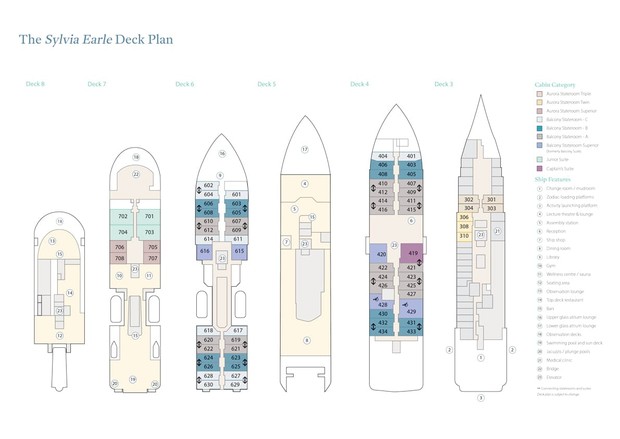

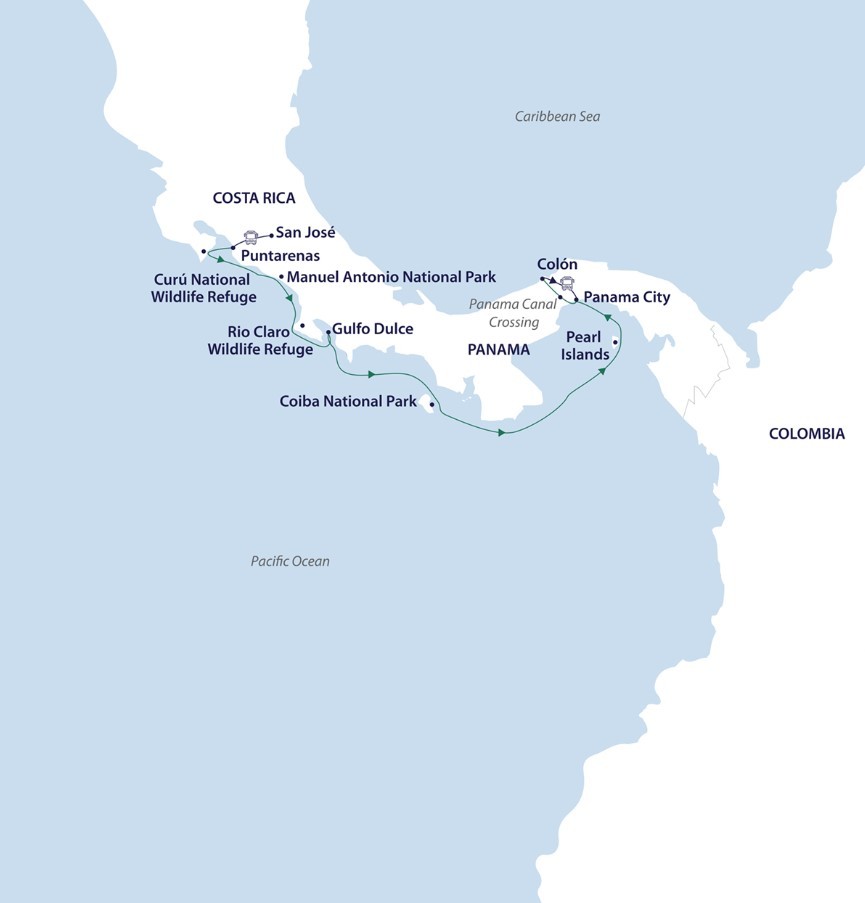

.jpg)